Cooking a perfect bowl of clear noodle soup might seem like a simple task, but achieving that balance of flavors, texture, and clarity can be quite an art. Whether you’re looking for a comforting meal after a long day, a quick snack, or a light dinner option, clear noodle soup offers a versatile and nutritious choice. This guide will take you through every step of making a delightful clear noodle soup, from selecting the right ingredients to perfecting your cooking technique. By the end, you’ll be able to whip up a bowl of clear noodle soup that’s as satisfying as it is aesthetically pleasing.
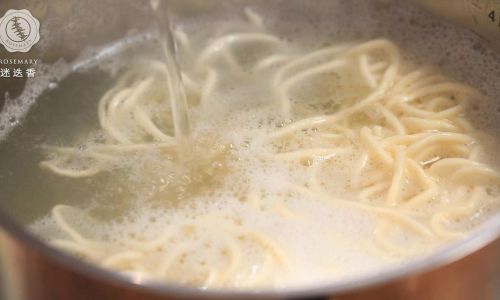
Understanding the Basics
Before diving into the recipe, let’s break down the essentials of clear noodle soup. The key to a successful dish lies in its simplicity and purity. Clear noodle soup emphasizes the natural flavors of its ingredients, with minimal seasoning to allow each component to shine. The broth should be clear and uncluttered, highlighting the delicate taste of the noodles and any accompanying vegetables or proteins.
Ingredients Overview:
- Broth: The foundation of your soup. It can be made from scratch using chicken, vegetable, or beef bones, or you can use a high-quality store-bought broth.
- Noodles: Choose thin, delicate noodles that won’t overpower the broth. Rice noodles, soba noodles, or thin egg noodles are excellent choices.
- Vegetables: Fresh, crisp vegetables like carrots, celery, onions, and greens add color, texture, and nutrients.
- Proteins: Optional but recommended for added depth. This could be lean chicken, shrimp, tofu, or even a soft-boiled egg.
- Aromatics: Garlic, ginger, and scallions enhance the flavor profile without clouding the broth.
- Seasonings: Salt, pepper, and a touch of soy sauce or fish sauce can elevate the taste without complicating it.
Step-by-Step Recipe
Now, let’s dive into the detailed recipe for a perfect clear noodle soup.
Step 1: Prepare the Broth
The broth is the heart of your clear noodle soup. While you can use store-bought broth, making your own from scratch will yield the best results.
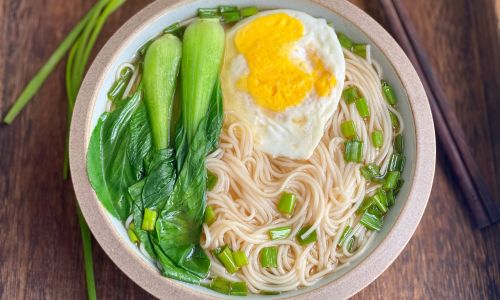
Homemade Chicken Broth:
- Ingredients: Chicken bones (with some meat attached), water, carrots, celery, onions, garlic, ginger, bay leaves, black peppercorns, and salt.
- Instructions:
- Preheat your oven to 400°F (200°C). Place the chicken bones on a baking sheet and roast for about 30-40 minutes, until they are golden brown and fragrant. This step helps to extract more flavor from the bones.
- While the bones are roasting, prepare your vegetables. Peel and roughly chop the carrots, celery, and onions. Smash the garlic cloves and peel the ginger, slicing it into thin pieces.
- Once the bones are done, transfer them to a large stockpot. Add enough water to cover the bones by at least 2 inches. Bring the water to a boil over high heat, then reduce the heat to low and skim off any foam or impurities that rise to the surface.
- Add the chopped vegetables, garlic, ginger, bay leaves, and peppercorns to the pot. Season lightly with salt.
- Simmer the broth gently for at least 4-6 hours, skimming any foam as needed. The longer you simmer, the more flavorful the broth will be.
- Strain the broth through a fine-mesh sieve, discarding the solids. Taste and adjust the seasoning with salt and pepper.
Store-Bought Broth:
- If using store-bought broth, select a low-sodium, high-quality option. You can enhance its flavor by simmering it with a few aromatic vegetables (like onions, carrots, and celery) for about 30 minutes before using.
Step 2: Cook the Noodles
The type of noodle you choose will affect the final texture and mouthfeel of your soup.
- Rice Noodles: Soak them in hot water for about 10-15 minutes until they are pliable, then drain and rinse with cold water.
- Soba Noodles: Cook them in boiling water for about 6-8 minutes, or until al dente. Drain and rinse with cold water to prevent sticking.
- Thin Egg Noodles: Cook in boiling water for 3-4 minutes, or until tender. Drain and rinse.
Step 3: Prepare the Vegetables
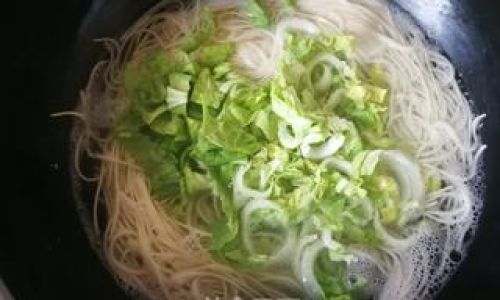
Fresh, crisp vegetables add color, texture, and essential nutrients to your soup.
- Chop your vegetables into bite-sized pieces. This could include carrots (sliced into thin rounds or matchsticks), celery (sliced thinly), bell peppers (diced), and greens (like spinach or bok choy, chopped).
- Blanch the vegetables: To maintain their bright color and crisp texture, blanch them in boiling water for just a minute or two, then plunge them into ice water to stop the cooking process. This step is optional but recommended for vegetables like broccoli, green beans, or asparagus.
Step 4: Add Proteins (Optional)
If you’re incorporating proteins into your soup, cook them separately and add them at the end to avoid overcooking.
- Chicken: Poach chicken breasts or thighs in simmering water until cooked through, then shred or slice them.
- Shrimp: Cook shrimp in a hot skillet with a bit of oil and garlic until pink and opaque.
- Tofu: Cut tofu into small cubes and lightly sear them in a non-stick pan with a bit of oil until golden brown on all sides.
Step 5: Assemble the Soup
Now, it’s time to put everything together.
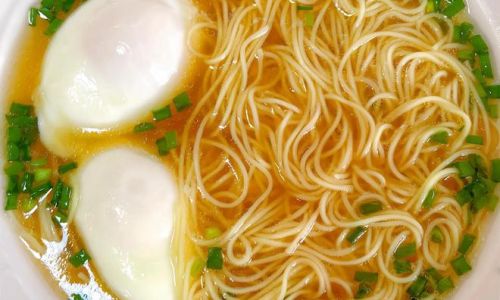
- Heat the Broth: Pour your strained and seasoned broth into a large pot and bring it to a gentle simmer.
- Add Noodles and Vegetables: Add your cooked and drained noodles to the broth. If using blanched vegetables, add them now. If using fresh, raw vegetables, add them a minute or two before serving to ensure they retain their crunch.
- Incorporate Proteins: Gently fold in your cooked proteins (chicken, shrimp, tofu) just before serving to avoid overcooking.
Step 6: Season and Garnish
The final touches make all the difference.
- Seasoning: Taste your soup and adjust the seasoning with salt, pepper, and a touch of soy sauce or fish sauce if desired. Remember, the broth should be flavorful but not overly salty.
- Garnishes: Add fresh herbs like cilantro, parsley, or scallions for a burst of color and freshness. A drizzle of sesame oil or a sprinkle of toasted sesame seeds can also elevate the flavor.
- Serving: Ladle the soup into bowls, ensuring each serving has a good mix of noodles, vegetables, and proteins.
Step 7: Enjoy
Finally, sit down and enjoy your homemade clear noodle soup. Take a moment to appreciate its clarity, the harmony of flavors, and the simplicity that makes it so special. Pair it with a side of steamed dumplings, a crisp salad, or a slice of toasted bread for a more filling meal.
Troubleshooting Tips
- Cloudy Broth: If your broth becomes cloudy, it’s likely due to impurities or overcooked vegetables. Ensure you skim off any foam during the simmering process and blanch vegetables separately if needed.
- Overcooked Noodles: Noodles should be cooked al dente to maintain their texture. Test them frequently and drain them as soon as they’re done.
- Imbalanced Flavors: Taste your broth frequently as you cook, adjusting the seasoning to your preference. Remember, the flavors should be subtle and balanced.
Conclusion
Cooking a perfect bowl of clear noodle soup is a rewarding experience that combines the art of simplicity with the science of flavor extraction. By following this step-by-step guide, you’ll be able to create a dish that’s not only visually appealing but also deeply satisfying. Whether you’re cooking for yourself, your family, or friends, clear noodle soup is a versatile and nutritious choice that’s sure to impress. Happy cooking!
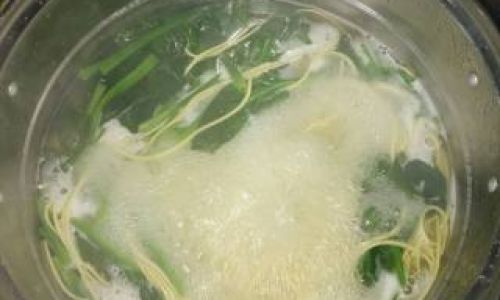
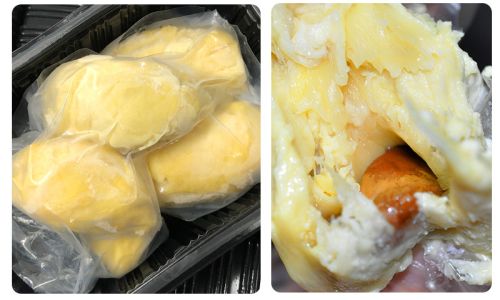




0 comments